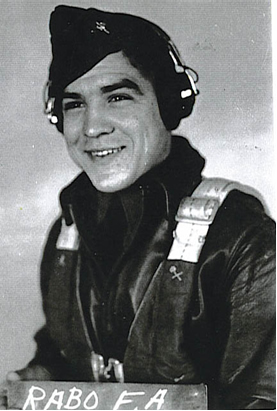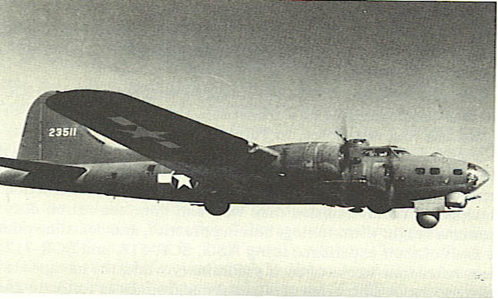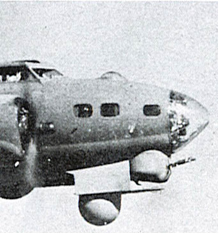This is the story of Major Fred Rabo and "Mickey Mouse". My late father wrote the following article in 2002 after many years of research and personal meetings with Fred. My father was an 8th Air Force combat veteran and B-17 crewman assigned to the 482nd Bomb Group. He was assigned to the 813th Bomb Squadron. With my father’s passing in 2006, I had always wanted to have this article published for him, Fred Rabo, "Mickey" and all those 8th Air Force "Mickey Operators" of WWII. "Mickey" was the name that became synonymous with USAAF "H2X" radar platform. "Mickey" was developed at the Massachusetts Institute of Technology Radiation Laboratory in Cambridge, Mass.

(Courtesy Rabo Family)
This was the "TOP SECRET" U.S. project that involved American's first development and deployment of aircraft equipped with Air to Ground Radar. One of the greatest claims of the Eighth Air Force is that neither enemy fighters nor enemy flak ever turned back a single mission. The same could not be said of European weather. Many missions were scrubbed, aborted or recalled because of the poor weather conditions en route or over the target area. In late 1943, "Mickey" was about to change that. The man who coined the name "Mickey" was the late Lt. Col Fred Rabo, 812th Bomb Squadron Commander and one of the key figures in the deployment of the 482nd Pathfinder Bomb Group. This is their story.
In 1942 and 1943, it became evident that a major problem in completing 8th Bomber Command missions to Europe successfully were the poor weather conditions existing over England and Europe, especially in the winter months. Before WWII started, Gen. Hap Arnold had stated that the U.S. Army Air Corps needed a way to carry out bombing missions in bad weather conditions. Gen. Ira C. Eaker, CO of the Eighth, also recognized this need, and was undoubtedly influenced by RAF leaders with whom he was working closely on the aerial war against Germany. The RAF, who earlier on had faced the same weather problems, had developed radio beam and radar as navigational aids in overcoming these problems. One member of the original 8th Bomber Command cadre that accompanied Gen. Eaker to England, who took up the challenge of finding an answer to the weather problem was Lt. Col. William S. Cowart, Jr., who in mid-1943, journeyed to Washington, D.C., and laid out his plans for a new USAAF Pathfinder group to be established in England. The top brass of the USAAF approved Col. Cowart's plan, and subsequently the 482nd Bomb Group (Pathfinder) was established at Station 102, Alconbury, England on Aug. 20, 1943 with the objective of leading bombardment missions of the Eighth Bomber Command to Europe by the use of radio beam and radar equipment. The 482nd was the only bomb group in the Eighth Air Force to be formed outside of the U.S. in WWII.
Fred Rabo was transferred to assist Col. Cowart in his efforts to establish a pathfinder group. Fred accompanied Col. Cowart back to the U.S. in 1943 to obtain B-17s equipped with the new version of radar developed at the M.I.T. Radiation Laboratory, as a modification of the radar (H2S) being used by the RAF in their bombing missions. The M.I.T. radar was known as H2X (AN/APS-15 for the production model). When Fred first saw the B-17's equipped with the hand-built retractable H2X units under the nose of the aircraft at Grenier Field, New Hampshire, he was simply heard to say "that radome looks, Mickey Mouse".
The nickname stuck and subsequently, it was shortened to "Mickey". Throughout the remainder of WWII, H2X radar units were commonly referred to as Mickey units. H2X operators were referred to as "Mickey Operators".

(Courtesy USAAF via Roger Freeman)

(Courtesy USAAF via Roger Freeman)